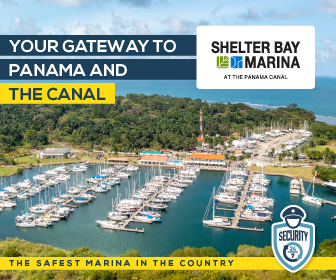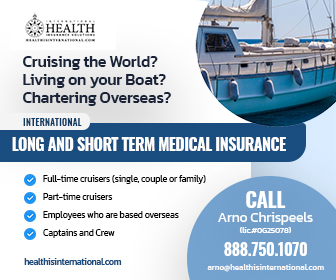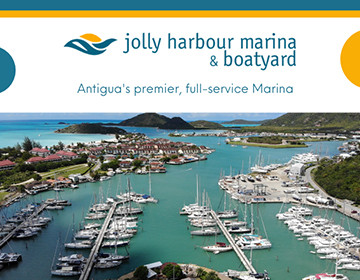Caribbean: Sargassum coverage significantly higher than most years since 2011
The month of Jan 2019 showed a total Sargassum coverage of 344 km2 as compared with a historical mean of 32 km2 between 2011 and 2017, for the area bounded by 8-23°N and 89-58°W. Although the bloom intensity remained relatively low in January, the bloom extent in 2019 is still significantly higher than most of the years during 2011-2018 for the Caribbean and the central West Atlantic. The reasons behind this record-high bloom, however, are yet to be determined.
Published 6 years ago
Outlook of 2019 Sargassum blooms in the Caribbean Sea
Sargassum seaweed, plegaic or floating algae, is impacting the open waters and beaches of the tropical Eastern Atlantic, from South America north to eastern coastlines of United States, along with Gulf of Mexico areas and the western Caribbean and even to the far shores of Africa. It seems to be coming from an area south of the equator/or on it, between South America and Africa. The plant’s leaf is a sail, and it’s weighted to be upright, an amazing adaptation, but makes this plant very mobile and wind driven. See the ‘sail leaf” with air bladder and the small growth nodes on the stems. The large mats float just under water, with tips of leaves in the air from distance, boaters can see what looks like a kind of “oil slick” or something on the water.
To help researchers track the seaweeds migration and stages of growth, citizen scientists/cruisers assist in environmental research by reporting impacted areas. The algae can be on the sea and pile up in harbors. Thick mats float on the ocean, causing fouling of vessels. Feet or meters of this weed can cover beaches in meters of stinking weed and rot. It’s an ongoing problem where ever the weed migrates to via winds and currents.
The Pelagic Sargassum research is a part of two university programs, University of South Florida)USF) and the University of Southern Mississippi’s Gulf Coast Research Laboratory(GCRL). To support, Seven Seas Cruising Association(SSCA) has developed a Clean Wake program to get the information to small vessels on passage who can report sightings and to report; we send research and alert information to publications, inform members and the public and also utilize the SSCA Single Sideband radio station, KPK, to get the message out.
Over the past four years, member and non-member cruisers’ reports and samples have helped develop a satellite imagery early warning system and helped identify new ways this weed propagates. BUT the problem is continuing, researchers still need more reports, especially on the WEST Caribbean and the northern Caribbean. SSCA also has reporting coming from Africa’s shorelines. The website for reporting link is below. Basically reporting cruisers note the lat/long DTG and type of weed from (mats or strings/threads). The site describes it, and vessels can report when they get to the harbor and the internet. On our boat, we also photograph the weed from the cockpit (along with a photo of the chart plotter) and take samples, drying, and shipping to the universities. Sample collecting is a special process and is coordinated with the researchers.
This weed is not good, its growth rate is increasing. This season 2019/2020 season shows signs of becoming as bad as the 2017/2018 season and worse than 2015. Its already in the Windwards, a bit early. This Sargassum seaweed can foul props, filters and rudders can get THRU some raw water filters and into water cooling systems. A warning to your R/O systems..if it gets into the filters or you make water in contaminated harbors..it has H2S and off-gasses. Then it can damage membranes, I.E. R/O MEMBRANES are toast! But it’s good for fish and such while at sea. But when it ends up on beaches it kills turtle eggs, embays harbors and then rots and off-gasses H2S and kills wildlife. We sent down gas monitors to East Caribbean last season, the off-gassing in some harbors(east sides) was OVER OSHA Alarm levels. It blisters paint, rusts..burns eyes and throats, etc. Its many elevated PPM near the weed..and only 2PPM can cause an abortion in a human (not sure what it does to animals, not good).
Cruisers need to be aware and if they can, send in reports of where it is, and NOT. NOT is also helpful. For NO Sargassum sighted, make one report when on return from passage with approximate locations of your travel with a few lat/longs and the DTGs of your trip. Basically, a NO WEED report helps too.
To report, go to the Gulf Coast Research Laboratory website:
http://gcrl.usm.edu/sargassum/index.php
Cruisers, sail, power, dingy, or land bound on beach or sea or harbor or marina can report. Land dwellers can report infestations. Makes no difference, weed comes in everywhere during the spring to fall.
Joan Conover Growltiger
SSCA CW Program/ CS Coordinator
SSCA Commodore
Hampton VA.
Related content
Related to following destinations: Anguilla, Antigua & Barbuda, Aruba, Bahamas, Barbados, Bermuda, British Virgin Islands, Cayman Islands, Cuba, Curacao, Dominica, Dominican Republic, Grenada, Guadeloupe, Haiti, Martinique, Mexico, Montserrat, Puerto Rico, Saba, Sint Maarten, St. Barts, St. Kitts & Nevis, St. Lucia, St. Martin, St. Vincent & the Grenadines, Statia, Trinidad & Tobago, Turks & Caicos, US Virgin Islands, USA, Venezuela
Related to the following Cruising Resources: Environment









